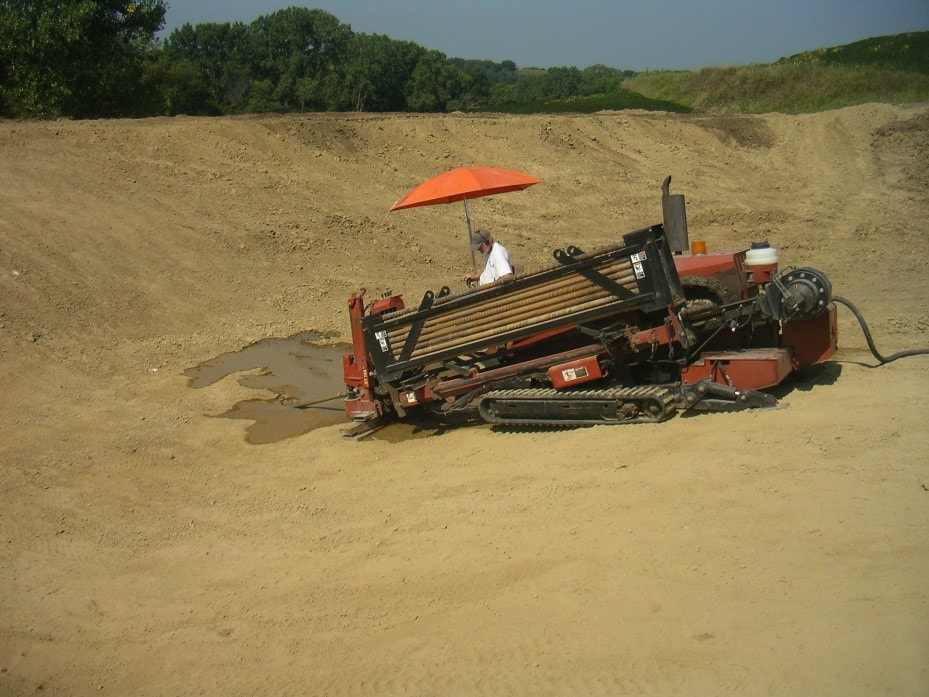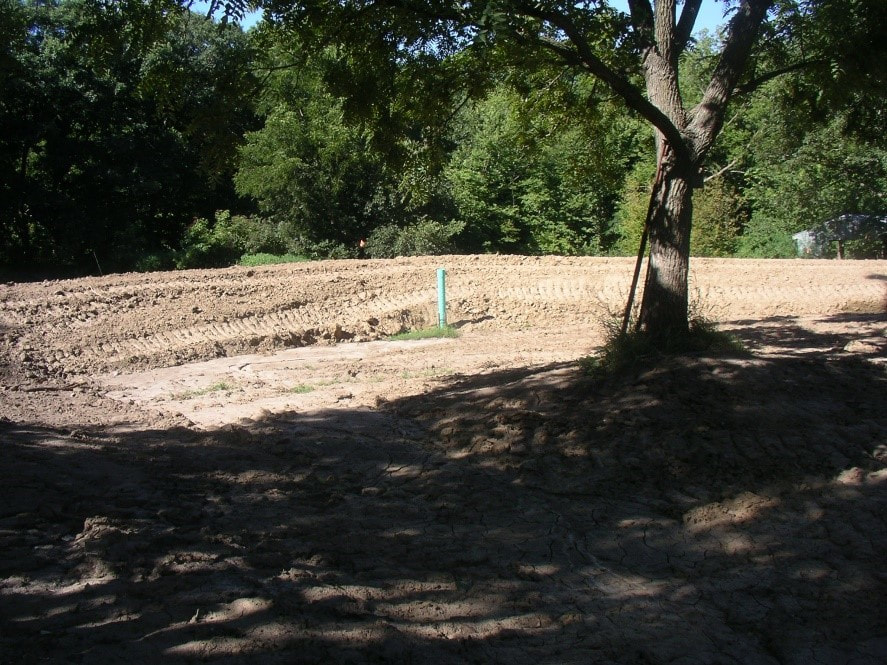|
By John Thomas, Project Director and Fluvial Geomorphologist for the Hungry Canyons Alliance. This article is part of the Loess Country series--check back for more soon!
Erosion control or stabilization of deep gullies in the Loess Hills is challenging since filling the gully and excavating a core trench in an area of such deep ravines is often cost-prohibitive. The only practical way to stop gully erosion is with a pipe-drop structure that passes water runoff from the top to the base of the gully through a pipe. The Hungry Canyons Alliance (HCA), in conjunction with the USDA-Natural Resource Conservation Service, is using directional drilling techniques to bore a hole at an angle through the loess soil from upstream of the headcut to the base of the gully wall. Polyethylene (PE) pipe is inserted at the base and pulled back up through the bore hole from downstream to upstream. The slurry used to drill the hole acts as a sealant between the pipe and soil making the borehole watertight as it dries. A vertical perforated PE riser is added to the angled drainage pipe to serve as an inlet. A water-retention basin is excavated upstream of the inlet, and a dam or terrace is built downstream between the inlet and the headcut of the ravine to collect water for gradual drainage through the riser and pipe. The basin allows a larger storm event to be controlled by the small drainage pipe. No filling or other work is done in the gully, dramatically reducing earthwork costs. The near-vertical gully slopes will gradually slump to a stable slope over time because collapsed debris will not be carried away by surges of runoff. Twelve of these experimental Bored Headcut Basin (BHB) structures have been built in the Loess Hills since 2007 to control 20 – 80-ft deep gully headcuts with small drainage areas (0.5 – 37 acres). These BHB’s have averaged only about $11,000 to build, with a maximum of around $17,000. They have weathered up to 4-inch rain events without incident. Considering that a traditional pipe-drop structure may cost as much as $60,000, the BHB has proven very cost-effective. HCA continues to monitor the progress of these structures while planning future BHB projects. If you are interested in controlling gully erosion on your property, please call your local USDA-NRCS office. Cost share for these projects have averaged 78%, so the average landowner cost for these projects has been only about $2,400. Plus, the USDA-NRCS provides survey and design assistance.
1 Comment
|
Archives
June 2024
Categories
All
|
Address712 South Highway Street
P.O. Box 189 Oakland, IA 51560 |
ContactPhone: 712-482-3029
General inquiries: [email protected] Visit our Staff Page for email addresses and office hours. |



 RSS Feed
RSS Feed